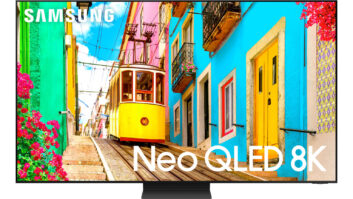After years of inter-industry squabbling and last-minute concessions, the consumer electronics and cable television industries have arrived at a national digital cable interoperability agreement.
The agreement is part of a broad “memorandum of understanding” between the two industries that is intended to lead to a “plug-and-play” standard that was needed to link digital cable equipment and services with consumer electronics devices. Once the agreement is approved by the Federal Communications Commission (FCC), it is expected to help speed the adoption of HDTV.
The memorandum, along with a letter to FCC Chairman Michael Powell, was signed by 14 consumer electronics companies and seven major cable multiple system operators (MSO) representing more than 75 percent of all cable subscribers.
The memorandum is a package of voluntary commitments, specifications and proposals for rules covering digital television (DTV) cable hardware compatibility and content protection.
The FCC, which had urged the industries to come up with digital television interoperability solutions, is expected to quickly adopt the recommendations.
The agreement calls for the phased-in use of two digital interface connectors on new digital cable-ready TVs and/or cable set-top converter boxes. These connectors include the IEEE-1394 “FireWire/iLINK” connnectors with Digital Transmission Content Protection (DTCP/5C) copy protection for recordable and networkable compressed video streams.
The agreement also adds a phased-in requirement for non-recordable DVI/HDMI with High-bandwidth Digital Content Protection connectors on digital televisions and cable set-top boxes.
Version 1.0 of the HDMI standard was released last week and already has strong industry support. HDMI is a spin-off of DVI and supplies an uncompressed video stream that cannot be recorded.
Pending timely FCC approval and final regulations, FireWire-equipped cable STBs and plug-and-play cable-compatible intergrated DTVs are expected to be available by 2004.
“This is a great day. It’s the most significant announcement since the Grand Alliance,” said Gary Shapiro, president and CEO of CEA. “This recommendation to the FCC is good news for consumers. It represents a true leadership effort on the part of both the cable and consumer electronics industries to advance the digital TV transition. This agreement stands as the single-most important step in moving the DTV transition forward to date.”
The agreement was considered a victory for consumer “fair use” digital recording rights. FireWire will allow consumers to make digital recordings of HDTV cable program material using encoding rules that are nearly identical to those already agreed to by the Digital Transmission Licensing Administrator, the so-called 5C.
“We have come to what we believe is the appropriate resolution and balance to give the consumer a reasonable expectation of what they can record,” said Mark Coblitz, senior VP/strategic planning for Comcast, who led the cable industry negotiating team. “This gives the consumer an enormous win.”
“The encoding rules are simple. The consumer has had a reasonable and normal and customary expectation to record content,” agreed Bob Perry, marketing VP for Mitsubishi, the consumer electronics industry lead negotiator. “And the rules say, consumers will still be able to record what comes over cable in digital form.”
The agreement prohibits cable providers who supply STBs with both FireWire and HDMI connectors to switch the outputs in order to restrict lawful recording.
The recommendations also cover a set of technical standards for cable systems and “cable-ready” DTV products, such as adapters between the cable wall jack and an integrated DTV to provide 5C copy protection. Integrated DTVs mandated by the FCC will likely be completely cable-compatible as well under the terms of the agreement.
The standardized cable specifications will likely open the door for HDTV cable products manufactured by traditional consumer electronics companies and sold at retail.
“The cable industry will enjoy retail presence for their devices,” said Robert Sachs, president/CEO, National Cable & Telecommunications Association (NCTA). “Consumers can go into consumer electronics stores and find cable products right next to satellite TV display. This is very consumer-friendly and we expect it to be very well received.”
The two sides also agreed to testing procedures to assure compatibility, a proposed regulatory framework for support of digital TV receivers, digital recorders with secure interfaces and other devices on cable systems, and a draft security technology license for the transfer of copyrighted material within a home network environment.
The two industries also agreed to work together on standards for future interactive, “two-way” digital cable TV products starting in January.
The agreement was hammered out between company representatives between July and October, facilitated by the CEA and the National Cable & Telecommunications Association (NCTA) and assisted by Cable Labs.
The FCC will still need to set an adoption timeline and settle any outstanding regulatory issues not covered in the agreement.













